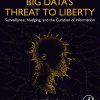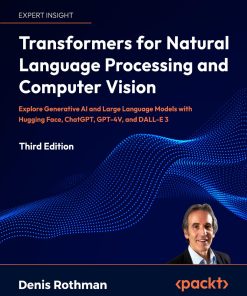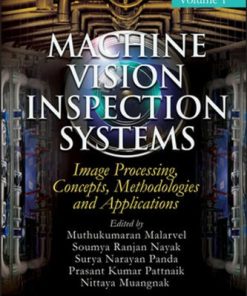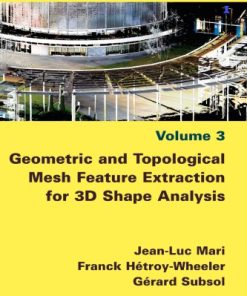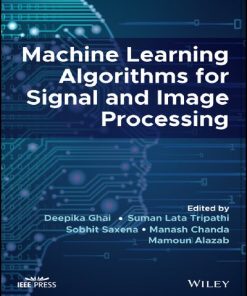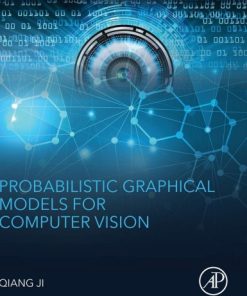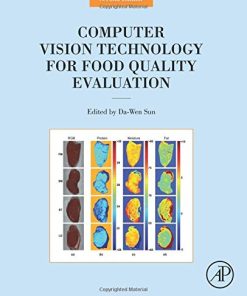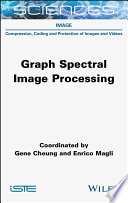Feature extraction and image processing for computer vision 4th Edition by Mark Nixon, Alberto Aguado 0128149775 9780128149775
$50.00 Original price was: $50.00.$25.00Current price is: $25.00.
Feature extraction and image processing for computer vision 4th Edition by Mark Nixon, Alberto Aguado – Ebook PDF Instant Download/DeliveryISBN: 0128149775, 9780128149775
Full download Feature extraction and image processing for computer vision 4th Edition after payment.
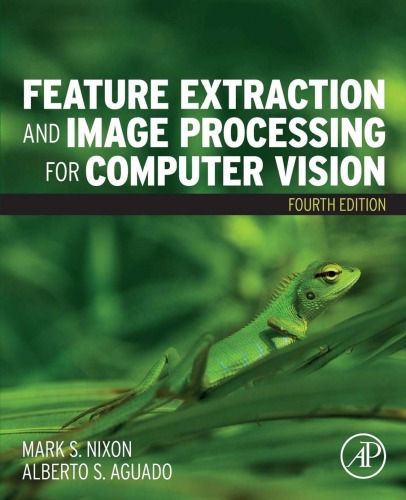
Product details:
ISBN-10 : 0128149775
ISBN-13 : 9780128149775
Author : Mark Nixon, Alberto Aguado
Feature Extraction for Image Processing and Computer Vision is an essential guide to the implementation of image processing and computer vision techniques, with tutorial introductions and sample code in MATLAB and Python. Algorithms are presented and fully explained to enable complete understanding of the methods and techniques demonstrated. As one reviewer noted, “The main strength of the proposed book is the link between theory and exemplar code of the algorithms.” Essential background theory is carefully explained.
Feature extraction and image processing for computer vision 4th Table of contents:
1. Introduction
1.1. Overview
1.2. Human and computer vision
1.3. The human vision system
1.4. Computer vision systems
1.5. Processing images
1.6. Associated literature
1.7. Conclusions
2. Images, sampling and frequency domain processing
2.1. Overview
2.2. Image formation
2.3. The Fourier Transform
2.4. The sampling criterion
2.5. The discrete Fourier Transform
2.6. Properties of the Fourier Transform
2.7. Transforms other than Fourier
2.8. Applications using frequency domain properties
2.9. Further reading
3. Image processing
3.1. Overview
3.2. Histograms
3.3. Point operators
3.4. Group operations
3.5. Other image processing operators
3.6. Mathematical morphology
3.7. Further reading
4. Low-level feature extraction (including edge detection)
4.1. Overview
4.2. Edge detection
4.3. Phase congruency
4.4. Localised feature extraction
4.5. Describing image motion
4.6. Further reading
5. High-level feature extraction: fixed shape matching
5.1. Overview
5.2. Thresholding and subtraction
5.3. Template matching
5.4. Feature extraction by low-level features
5.5. Hough transform
5.6. Further reading
6. High-level feature extraction: deformable shape analysis
6.1. Overview
6.2. Deformable shape analysis
6.3. Active contours (snakes)
6.4. Shape Skeletonisation
6.5. Flexible shape models – active shape and active appearance
6.6. Further reading
7. Object description
7.1. Overview and invariance requirements
7.2. Boundary descriptions
7.3. Region descriptors
7.4. Further reading
8. Region-based analysis
8.1. Overview
8.2. Region-based analysis
8.3. Texture description and analysis
8.4. Further reading
9. Moving object detection and description
9.1. Overview
9.2. Moving object detection
9.3. Tracking moving features
9.4. Moving feature extraction and description
9.5. Further reading
10. Camera geometry fundamentals
10.1. Overview
10.2. Projective space
10.3. The perspective camera
10.4. Affine camera
10.5. Weak perspective model
10.6. Discussion
10.7. Further reading
11. Colour images
11.1. Overview
11.2. Colour image theory
11.3. Perception-based colour models: CIE RGB and CIE XYZ
11.4. Additive and subtractive colour models
11.5. Luminance and chrominance colour models
11.6. Additive perceptual colour models
11.7. More colour models
12. Distance, classification and learning
12.1. Overview
12.2. Basis of classification and learning
12.3. Distance and classification
12.4. Neural networks and Support Vector Machines
12.5. Deep learning
12.6. Further reading
People also search for Feature extraction and image processing for computer vision 4th:
how features are extracted from an image
types of feature extraction in image processing
what is feature extraction in digital image processing
what is feature extraction in image processing
feature extraction and image processing for computer vision
Tags: Feature extraction, image processing, computer, Mark Nixon, Alberto Aguado
You may also like…
Computers - Hardware
Design for Embedded Image Processing on FPGAs, 2nd Edition Donald G. Bailey
Computers - Networking
Computer vision theory algorithms practicalities 5th Edition by E. R. 012809575X 9780128095751
Mathematics - Wavelets and signal processing
Biology and other natural sciences - Plants: Agriculture and Forestry
Computer Vision Technology for Food Quality Evaluation 2nd Edition Sun
Computers - Computer Graphics & Design


